Yes, birds too rock a mohawk down the center of the head to the back, some showing feathers slicked toward the nape or brushed upward.
Why does a bird need a mohawk when it has colorful feathers?
Well, it's a beautiful feature; so hopefully, the female bird ought to notice it. Also, some birds use mohawks to signal the presence of a predator or possible danger.
Let's look at several birds with mohawks.
Birds With Stunning Mohawks
1. Palm Cockatoo
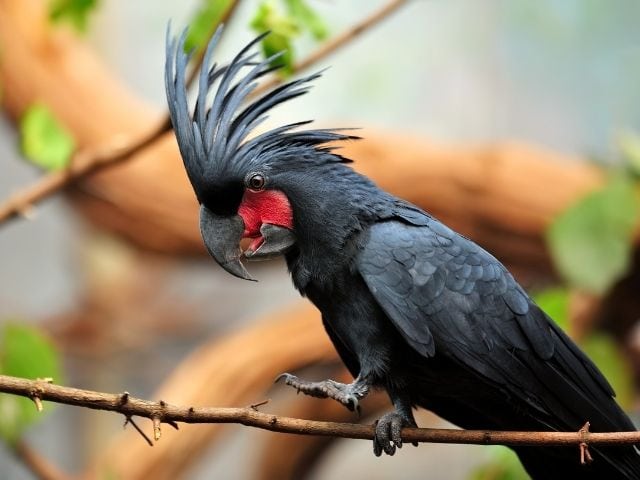
This parrot has a majestic smoky black mohawk with a red patch on its cheek. Its bill is stocky with a sharp tip to hold a stick as it drums rhythmically.
A palm cockatoo is one of the largest cockatoos as it can grow between 19.7 and 25.6 inches long. It lives in various countries, including Australia, Indonesia, and Papua New Guinea.
2. Victoria-crowned Pigeon
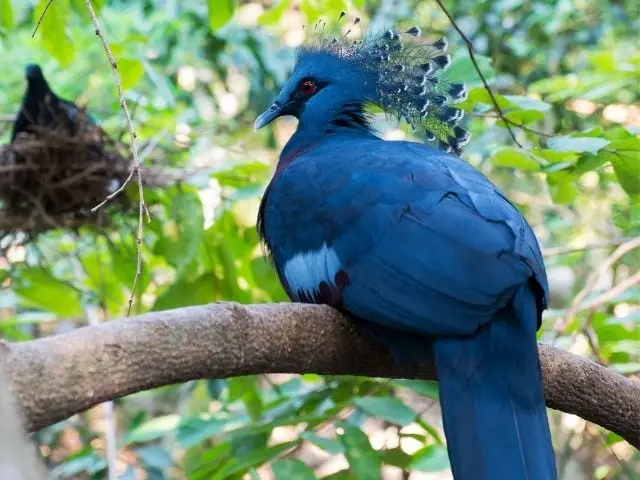
This large pigeon has a bluish-gray back and throat, a lacy mohawk, a maroon chest, plus red eyes.
It's called Victoria after the Queen of the British monarch because of its stunning head feathers. You're likely to see it in New Guinea.
3. Western-crowned Pigeon
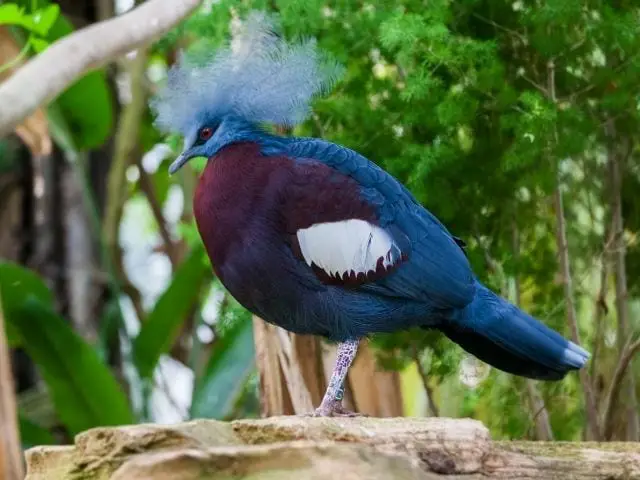
Unfortunately, it's a vulnerable bird due to habitat loss and humans hunting it down for its stylish mohawk. But, if you're lucky to see one, you'll find it stunning thanks to its grayish head feathers. Like the Victoria crowned pigeon, this one also lives in New Guinea.
4. Golden Pheasant
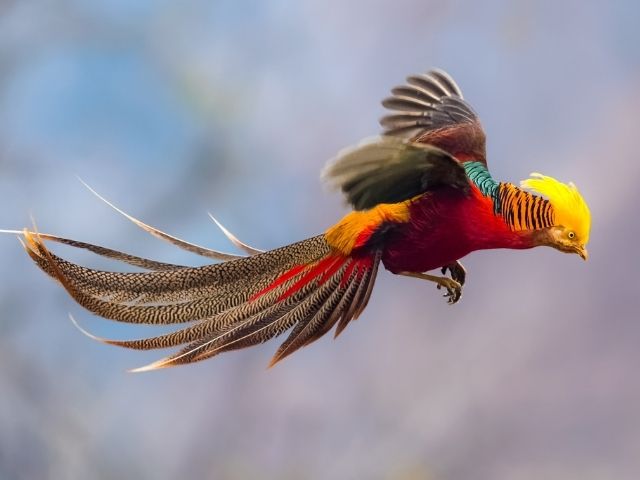
A golden pheasant is one of the most colorful birds you'll come across. It has a golden mohawk contrasting its pronounced orange cape, red body, and elongated barred tail.
It's an elusive species that'll have you looking for it for hours in woodlands. To ID it, know that it grows between 23.6 and 45.3 inches long, though it's smaller than a great blue heron that averages 38.2 to 53.9 inches long.
5. Eurasian Hoopoe

Its brownish head feathers have black tips like the plumage of an American kestrel or a house finch. These tips contrast the hoopoe's black-barred wing and back. It measures 9.3 to 12.6 inches, about the same body length as a mourning dove.
Further, this species has a long, sharp bill to forage in the soil or defend in fights. It has a thick neck that's not as long as a crane.
6. Red-crested Turaco

Its red head feathers aren't brushed upward like the crest of a northern cardinal, but they're still stunning. It has a yellow, thick, short bill and greenish wings with red panels. The red-crested turaco lives in Angola, a common sighting in woodlands, savannah forests, and grasslands.
It's between 17.7 and 19.7 inches long, around the size of a pileated woodpecker, as the latter's length ranges from 15.8 to 19.3 inches. This bird is monogamous, and you'll spot both sexes building a nest in a dense forest up to 60 feet from the ground.
7. Cockatiel
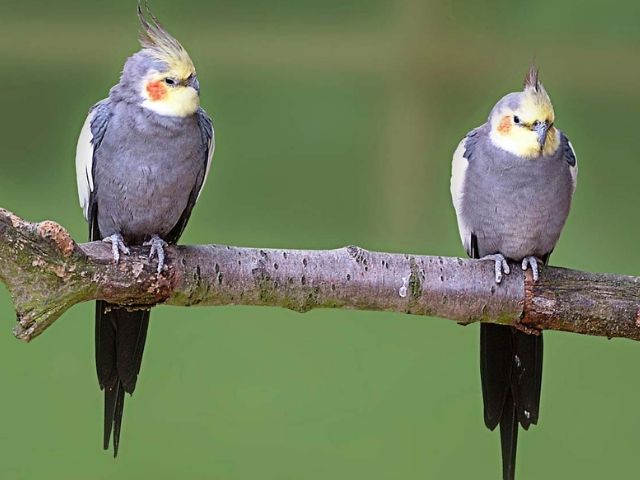
It's a cockatoo, a small bird with a yellow face and a mohawk that's yellow with black tips. A cockatiel is about as big as a northern flicker since it grows between 12 and 13 inches long.
Its body has gray plumage like the crown of a male house sparrow.
8. Sulphur-crested Cockatoo
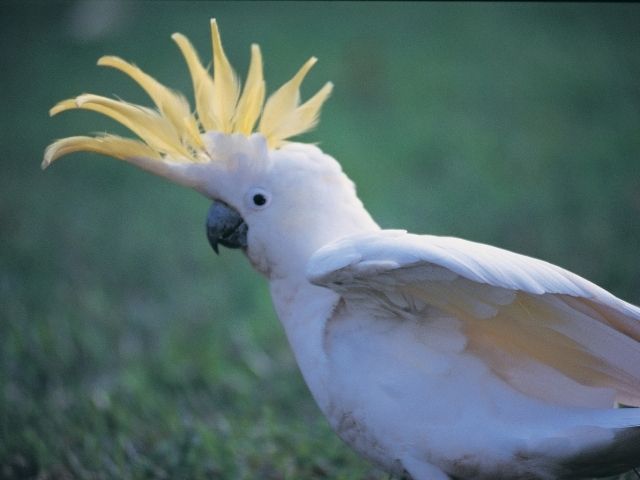
This parrot has a majestic yellow crown with feathers curled up and forward, matching the yellowish tips on its flight wings and tail. Its study, thick bill curves down.
It's about the size of an American crow as it measures 17.5 to 21.5 inches long.
This species lives in New Guinea, Australia, Singapore, and Indonesia. Most people love it as a pet because it's intelligent. You can set up seed feeders for it.
9. Tufted Titmouse
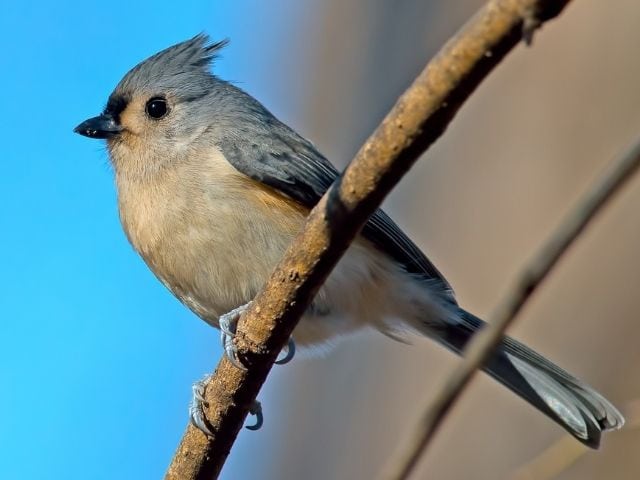
This bird species grows between 5.5 and 6.3 inches long, the same size as a downy woodpecker and smaller than a rufous hummingbird. Its gray mohawk is more pronounced than the black cap of a black-capped chickadee or a common tern.
This mohawk has the same color as the crest of a northern cardinal. Further, it has a whitish underbelly with peachy flanks and a gray back. It's a backyard bird; therefore, entice it with seeds on a hopper feeder. It feeds on wasps, nuts, fruits, and caterpillars in woodlands or parks.
However, it may also build a new one using damp leaves, moss, plus grass. The nest's lining consists of wool, cotton, or hair from mammals. The female lays up to nine eggs, and they are almost the same width and length as the eggs of a song sparrow.
On top of that, these eggs incubate for 12 to 14 days, the same duration as an American robin.
10. Royal Flycatcher
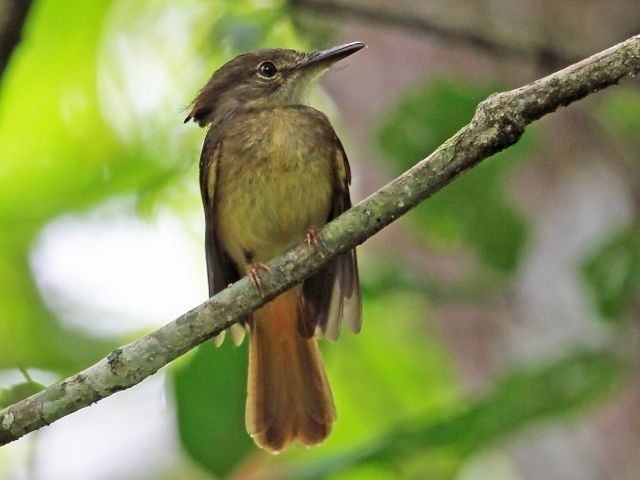
I doubt there's another bird with a crest that's as pompous as this one. But, I stand corrected. Its head feathers are elaborate for a species with a body length averaging 5.9 to 7 inches. It's even smaller than a European starling or a hairy woodpecker.
This species builds a small nest using dead leaves, roots, moss, and plant fiber. You'll notice an entrance set on the side when you come across a flycatcher's nest. Inside, a female bird lays two eggs and incubates them for about 23 days.
Read Also: Small Birds With Long Beaks
11. Great Curassow
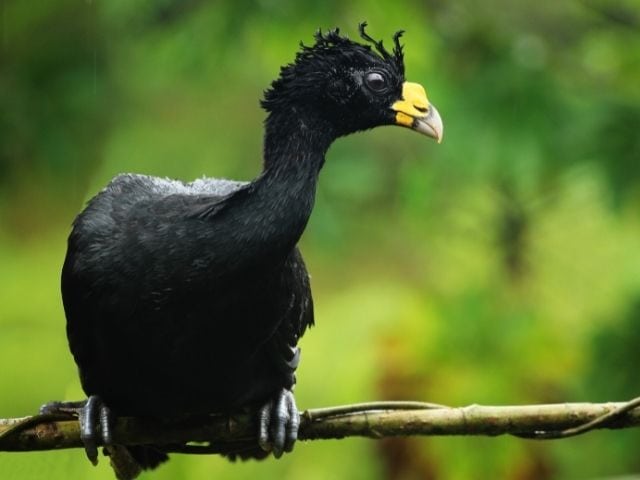
The male bird has black upper parts, a white belly, and curly black feathers on its crown that resemble a fan. Its mohawk is unforgettable because it contrasts a black face with a large yellow bulge above the bill. This bird's tail also grows long.
A female bird has different plumage ranging from chestnut to black with a crest of black and white feathers.
It feeds on the ground like turkey or chicken, and it inhabits the rainforests and dry forests of Central America.
You're likely to see it in national parks and reserves where it can build nests in tree hollows.
In South America, you may spot it in Colombia and Ecuador. Since it's monogamous and antisocial, you'll see pairs walking on the ground like poultry.
Curassows forage on the ground for almost the same things other birds eat, such as fruits, berries, seeds, small animals, and insects. They also have to fight predators like snakes.
The great curassow has a body length of 31 to 39 inches. Its lifespan is 24 years, and it doesn't reproduce a lot as the female lays about two eggs.
12. Wood Duck
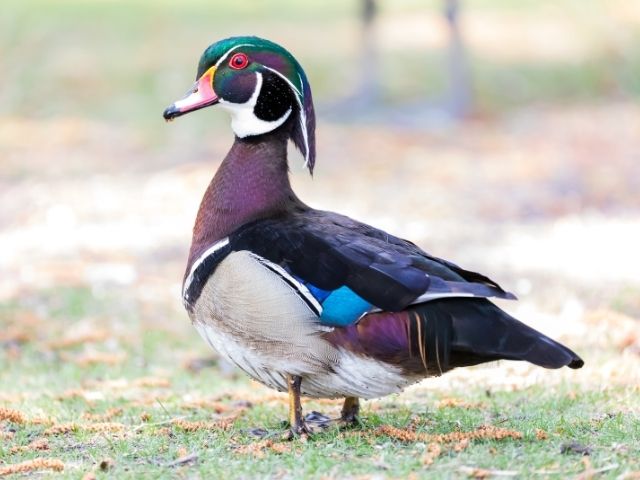
The male will have you reaching for your camera to take a picture of its immaculate plumage. It looks like a comb went through its green mohawk and laid every feather back so you can see its red eye, black face, and a yellow spot above its pink, black and white bill.
A female has a smaller pale gray crest, the same shade as the crown of an eastern bluebird. It also has brown feathers and blue patches on its wings.
It lives in many places across North America, with a resident population inhabiting the eastern and northwestern states. The breeding range is farther north, while the nonbreeding wood ducks inhabit the southern states. You may see it in wooded swamps.
A wood duck's body length averages 18.5 to 21.3 inches.
13. Eastern Towhee
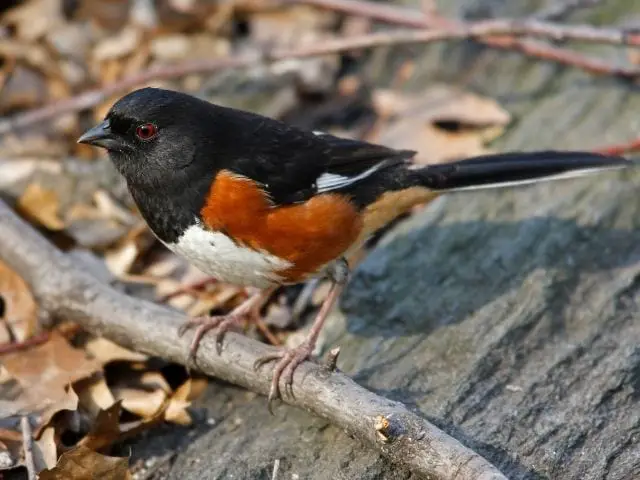
Its mohawk is not as outstanding as some we looked at earlier. But, it can raise its forehead into a sharp crest that almost resembles a blue jay or an American goldfinch.
This towhee's body length ranges between 6.7 and 9.1 inches, similar to the size of a red-winged blackbird.
You'll only see it in the eastern states of the US when birding in North America. There's a resident, breeding, migratory and nonbreeding range in this region.
This towhee belongs to the Passerellidae family with the fox sparrow and the white-crowned sparrow.
You may spot it around your bird feeder, looking for seeds.
Frequently Asked Questions
Where Do Royal Flycatchers Live?
You can spot them in parts of Mexico, Bolivia, and Brazil but they live in different places depending on the subspecies since there are four of them. The ones in Central America are the northern flycatchers, while the birds in the forests of Brazil are the Amazonian or Atlantic flycatchers. If you see one in Peru or Ecuador, then you're likely to be looking at the pacific flycatcher.
Watch this amazing video of Royal Flycatchers:
What Is The Bird With A Yellow Mohawk?
You're probably asking about a sulfur-crested cockatoo as it has yellow curled feathers on its crown.
What Bird Has An Orange Mohawk?
A golden pheasant flaunts a bright mohawk above a red and black cape that runs down the neck. It's so colorful with its yellow upper parts, red and blue wings, and a red underside.
Final Thoughts
You're likely to find intricate mohawks on larger birds than smaller ones like the house finch. Therefore, you may have to search for them in national parks and forests across North America instead of waiting for sightings around your bird feeder.
Though some have feathers on the crown, others have a tuft, such as the two rows on a great horned owl.

